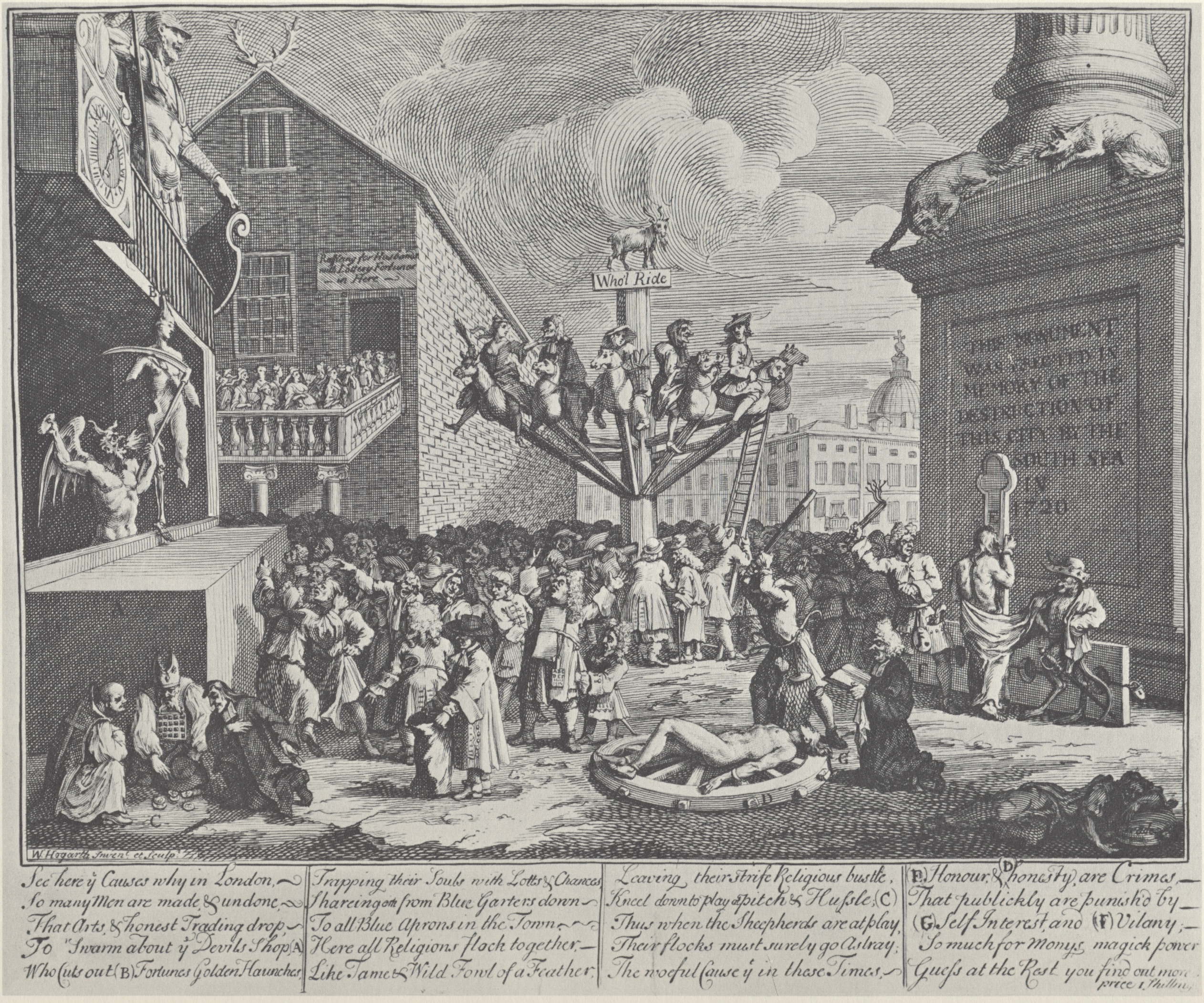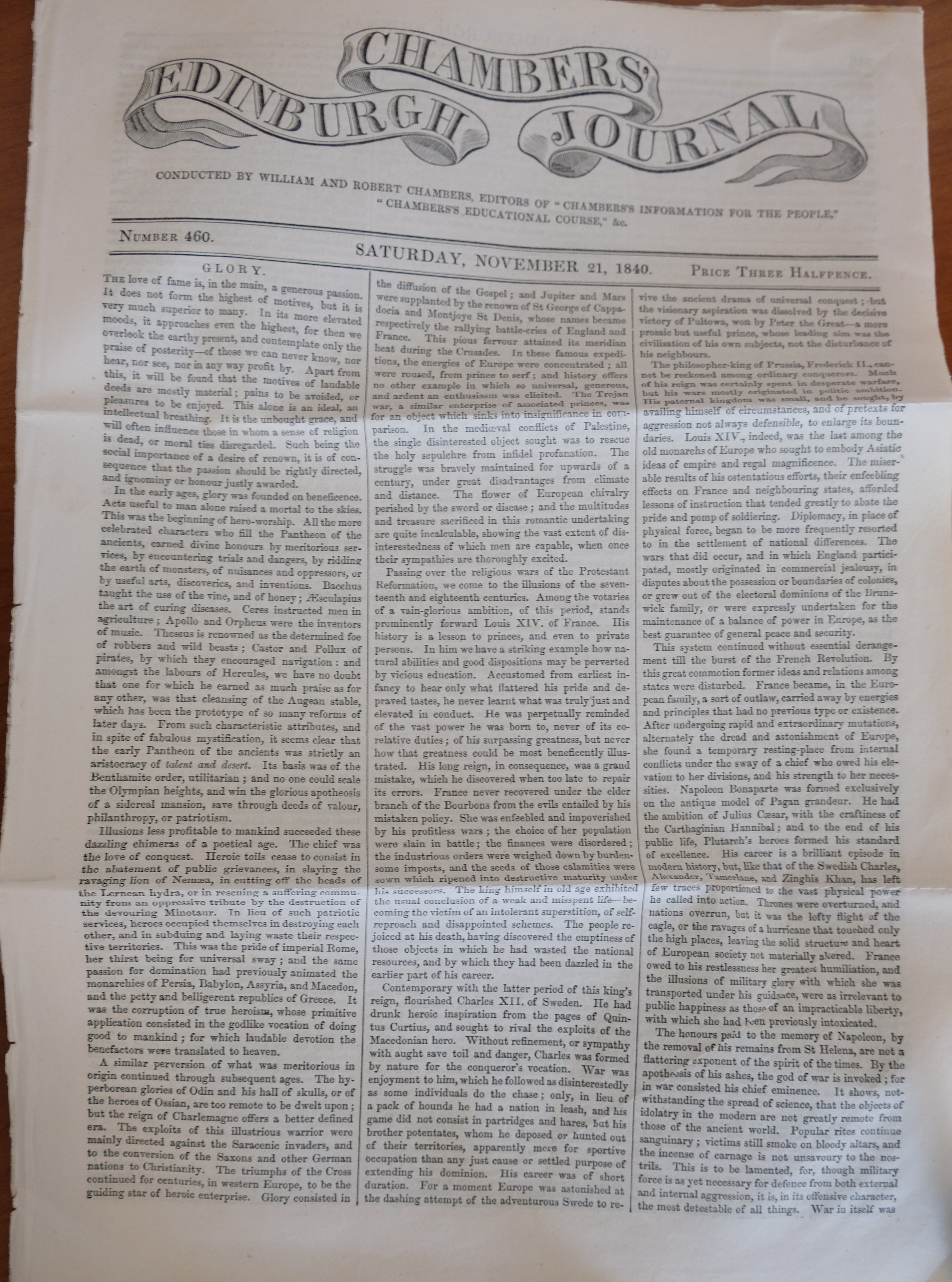|
Beefsteak Club
Beefsteak Club is the name or nickname of several 18th- and 19th-century male dining clubs in Britain and Australia that celebrated the beefsteak as a symbol of patriotic and often Whig concepts of liberty and prosperity. The first beefsteak club was founded about 1705 in London by the actor Richard Estcourt and others in the arts and politics. This club flourished for less than a decade. The Sublime Society of Beef Steaks was established in 1735 by another performer, John Rich, at the Theatre Royal, Covent Garden, where he was then manager, and George Lambert, his scenic artist, with two dozen members of the theatre and arts community (Samuel Johnson joined in 1780). The society became much celebrated, and new members included royalty, statesmen and great soldiers: in 1785, the Prince of Wales joined. At the weekly meetings, the members wore a blue coat and buff waistcoat with brass buttons bearing a gridiron motif and the words "Beef and liberty". The steaks and baked pot ... [...More Info...] [...Related Items...] OR: [Wikipedia] [Google] [Baidu] |
Old Jewry
Old Jewry is a one-way street in the City of London, the historic and financial centre of London. It is located within Coleman Street ward and links Poultry to Gresham Street. The street now contains mainly offices for financial companies. The nearest London Underground station is Bank and the closest mainline railway station is Cannon Street. Early history Soon after the Norman Conquest, William the Conqueror encouraged Jews to come to England. Some settled in cities throughout his new domain, including in London. According to Reverend Moses Margoliouth, Old Jewry was a ghetto. Ghettos, areas of a city mainly or exclusively populated by Jews, were common across Europe. In 2001, archaeologists discovered a mikveh (ritual bath) near to Old Jewry, on the corner of Gresham Street and Milk Street, under what is now the State Bank of India. It would have fallen into disuse after 1290, when the Jews were expelled from England. On the west side of Old Jewry is St Olave Old J ... [...More Info...] [...Related Items...] OR: [Wikipedia] [Google] [Baidu] |
John Wilkes
John Wilkes (17 October 1725 – 26 December 1797) was an English Radicalism (historical), radical journalist and politician, as well as a magistrate, essayist and soldier. He was first elected a Member of Parliament in 1757. In the Middlesex election affair, Middlesex election dispute, he fought for the right of his votersrather than the British House of Commons, House of Commonsto determine their representatives. In 1768, angry protests of his supporters were suppressed in the Massacre of St George's Fields. In 1771, he was instrumental in obliging the government to concede the right of printers to publish wikt:verbatim, verbatim accounts of parliamentary debates. In 1776, he introduced the first Bill (law), bill for parliamentary reform in the Parliament of Great Britain, British Parliament. During the American Revolutionary War, American War of Independence, he was a supporter of the rebels, adding further to his popularity with Patriot (American Revolution), American Whi ... [...More Info...] [...Related Items...] OR: [Wikipedia] [Google] [Baidu] |
The Times
''The Times'' is a British Newspaper#Daily, daily Newspaper#National, national newspaper based in London. It began in 1785 under the title ''The Daily Universal Register'', adopting its modern name on 1 January 1788. ''The Times'' and its sister paper ''The Sunday Times'' (founded in 1821), are published by Times Media, since 1981 a subsidiary of News UK, in turn wholly owned by News Corp. ''The Times'' and ''The Sunday Times'' were founded independently and have had common ownership only since 1966. It is considered a newspaper of record in the UK. ''The Times'' was the first newspaper to bear that name, inspiring numerous other papers around the world. In countries where these other titles are popular, the newspaper is often referred to as or , although the newspaper is of national scope and distribution. ''The Times'' had an average daily circulation of 365,880 in March 2020; in the same period, ''The Sunday Times'' had an average weekly circulation of 647,622. The two ... [...More Info...] [...Related Items...] OR: [Wikipedia] [Google] [Baidu] |
David Garrick
David Garrick (19 February 1716 – 20 January 1779) was an English actor, playwright, Actor-manager, theatre manager and producer who influenced nearly all aspects of European theatrical practice throughout the 18th century, and was a pupil and friend of Samuel Johnson. He appeared in several amateur theatricals, and with his appearance in the title role of Shakespeare's ''Richard III (play), Richard III'', audiences and managers began to take notice. Impressed by his portrayals of Richard III and several other roles, Charles Fleetwood (theatre manager), Charles Fleetwood engaged Garrick for a season at the Theatre Royal, Drury Lane in the West End theatre, West End. He remained with the Drury Lane company for the next five years and purchased a share of the theatre with James Lacy (actor), James Lacy. This purchase inaugurated 29 years of Garrick's management of the Drury Lane, during which time it rose to prominence as one of the leading theatres in Europe. At his death, thr ... [...More Info...] [...Related Items...] OR: [Wikipedia] [Google] [Baidu] |
William Hogarth
William Hogarth (; 10 November 1697 – 26 October 1764) was an English painter, engraving, engraver, pictorial social satire, satirist, editorial cartoonist and occasional writer on art. His work ranges from Realism (visual arts), realistic portraiture to comic strip-like series of pictures called "modern moral subjects", and he is perhaps best known for his series ''A Harlot's Progress'', ''A Rake's Progress'' and ''Marriage A-la-Mode (Hogarth), Marriage A-la-Mode''. Familiarity with his work is so widespread that satirical political illustrations in this style are often referred to as "Hogarthian". Hogarth was born in the City of London into a lower-middle-class family. In his youth he took up an apprenticeship with an engraver, but did not complete the apprenticeship. His father underwent periods of mixed fortune, and was at one time imprisoned in lieu of payment of outstanding debts, an event that is thought to have informed William's paintings and prints with a hard edge ... [...More Info...] [...Related Items...] OR: [Wikipedia] [Google] [Baidu] |
Robert Chambers (journalist)
Robert Chambers (; 10 July 1802 – 17 March 1871) was a Scottish publisher, geologist, History of evolutionary thought, evolutionary thinker, author and journal editor who, like his elder brother and business partner William Chambers (publisher), William Chambers, was highly influential in mid-19th-century scientific and political circles. Chambers was an early phrenology, phrenologist in the Edinburgh Phrenological Society. He was also the anonymous author of ''Vestiges of the Natural History of Creation'', which was so controversial that his authorship was not acknowledged until after his death. Early life Chambers was born in Peebles in the Scottish Borders 10 July 1802 to Jean Gibson (''c''. 1781–1843) and James Chambers, a cotton manufacturer. He was their second son of six children. The town had changed little in centuries. The town had old and new parts, each consisting of little more than a single street. Peebles was mainly inhabited by weavers and labourers living i ... [...More Info...] [...Related Items...] OR: [Wikipedia] [Google] [Baidu] |
William Chambers (publisher)
William Chambers of Glenormiston (; 16 April 180020 May 1883) was a Scotland, Scottish publisher and politician, the brother (and business partner) of Robert Chambers (publisher born 1802), Robert Chambers. The brothers were influential in the mid-19th century, in both scientific and political circles. Biography Chambers was born in Peebles the son of James Chambers, a cotton mill owner, said to have 100 looms in his factory, and his wife, Jean Gibson. William was educated locally, but well, being trained in the Classics.Grant's Old and New Edinburgh vol.2 p.224 The family moved to Edinburgh in 1814 to work in the book-selling trade. William was apprenticed to a John Sutherland, a bookseller with a circulating library based at 9 Calton Street at the base of Calton Hill. William was paid 4/- per week, from which he paid 1/6 per week for lodgings at Boak's Land off the West Port at the west end of the Grassmarket. William opened his own bookshop in 1819 on Broughton Str ... [...More Info...] [...Related Items...] OR: [Wikipedia] [Google] [Baidu] |
Charles Mordaunt, 4th Earl Of Peterborough
Charles Mordaunt, 4th Earl of Peterborough, 2nd Earl of Monmouth (1708 – 1 August 1779) was a British peer and Member of Parliament, styled Viscount Mordaunt from 1710 to 1735. Biography He was the son of John Mordaunt, Viscount Mordaunt and Lady Frances Powlett, and succeeded his grandfather, Charles Mordaunt, 3rd Earl of Peterborough in the earldom Earl () is a rank of the nobility in the United Kingdom. In modern Britain, an earl is a member of the peerage, ranking below a marquess and above a viscount. A feminine form of ''earl'' never developed; instead, ''countess'' is used. The titl .... He was married twice. By his first wife, Mary, he had at least one child: * Mary Anastatia Grace Mordaunt (born 25 June 1738). In 1814, following the death of her half-brother, Charles Henry Mordaunt, 5th Earl of Peterborough, 10th Baron Mordaunt, she became the 11th Baroness Mordaunt. Mary died without issue in 1819. He and his second wife, Robiniana, had the following chil ... [...More Info...] [...Related Items...] OR: [Wikipedia] [Google] [Baidu] |
Robert Walpole
Robert Walpole, 1st Earl of Orford (; 26 August 1676 – 18 March 1745), known between 1725 and 1742 as Sir Robert Walpole, was a British Whigs (British political party), Whig statesman who is generally regarded as the ''de facto'' first Prime Minister of Great Britain, serving from 1721 to 1742. His formal titles included First Lord of the Treasury, Chancellor of the Exchequer, and Leader of the House of Commons. Although the exact dates of Walpole's dominance, dubbed the "Robinocracy", are a matter of scholarly debate, the period 1721–1742 is often used. He dominated the Walpole–Townshend ministry, as well as the subsequent Walpole ministry, and holds the record as the List of prime ministers of the United Kingdom by length of tenure, longest-serving British prime minister. W. A. Speck, W. A. Speck wrote that Walpole's uninterrupted run of 20 years as prime minister "is rightly regarded as one of the major feats of British political history. Explanations a ... [...More Info...] [...Related Items...] OR: [Wikipedia] [Google] [Baidu] |
The Spectator (1711)
''The Spectator'' was a daily publication founded by Joseph Addison and Richard Steele in England, lasting from 1711 to 1712. Each "paper", or "number", was approximately 2,500 words long, and the original run consisted of 555 numbers, beginning on 1 March 1711. These were collected into seven volumes. The paper was revived without the involvement of Steele in 1714, appearing three times a week for six months, and these papers when collected formed the eighth volume. Eustace Budgell, a cousin of Addison's, and the poet John Hughes also contributed to the publication. Aims In Number 10, Mr. Spectator states that ''The Spectator'' will aim "to enliven morality with wit, and to temper wit with morality". The journal reached an audience of thousands of people every day, because "the ''Spectators'' was something that every middle-class household with aspirations to looking like its members took literature seriously would want to have." He hopes it will be said he has "brought ... [...More Info...] [...Related Items...] OR: [Wikipedia] [Google] [Baidu] |




